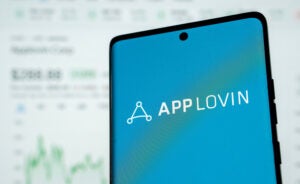 “Data-Driven Thinking” is written by members of the media community and contains fresh ideas on the digital revolution in media.
“Data-Driven Thinking” is written by members of the media community and contains fresh ideas on the digital revolution in media.
Today’s column is written by Tim Mayer, chief marketing officer at Trueffect.
A new trend is emerging among CPG brands. They’ve started dipping their toes in the “loyalty program” pool, similar to what performance advertisers in verticals such as retail and travel services have been offering to their customers for years.
Familiar brands, such as Purell, are offering loyalty programs that, at their core, are being positioned as a way to learn about customers and better understand what they buy, why they buy and their common psychographic or demographic attributes, as well as what items and free gifts these customers desire for future product development.
Much as it is for performance advertisers, all of this information is extremely insightful for CPG brands to better understand their buyers. But what’s missing?
Targeting Users Through Loyalty Programs
Many performance advertisers in the travel and retail space today do not fully leverage the valuable data they collect from their own customers, and do not have a strategy in place to do so in the future. For example, when a user searches for a flight or hotel on a travel site and this data is not captured or associated with that user, advertisers miss out on a prime opportunity to use their own data to target these users with the most relevant ads.
Once you have a strategy for capturing this information, it can be used not only for content and offer personalization on the site, but also to display relevant offers to that individual on popular sites around the web. These performance advertisers have the keys to advertising gold: a website where users create first-party data around the clock that can be captured and leveraged to improve both “on website” and advertising performance.
CPG brands, on the other hand, typically sell in the offline world through brick-and-mortar retail stores. For much of the past, these CPG brands have not had the mechanism to connect with their prospects or customers in a direct and meaningful way, targeting them and their lookalikes and act-likes around the web.
These brands have been forced to buy offline purchase data to try to connect to users’ online identities. This technique can be expensive and the rates of actually matching customer IDs to the digital world typically succeed only 20% to 30% of the time. Gathering this understanding can be valuable for a brand but, traditionally, it has been difficult for performance advertisers to make these economics work for them, posing even more of challenge for brand advertisers that do not have a conversion event online and can’t directly tie revenue to these activities.
Leveraging Loyalty Programs To Capture First-Party Data
So what alternatives do these CPG brands have to create usable first-party data without breaking the bank on data matching? Since brands like Purell have no ecommerce storefront where customers regularly interact with them or buy directly, a loyalty program is an interesting vehicle to attempt to connect with customers, learn more about them and target other lookalike users across the web with advertising and cross-sell and upsell other complimentary products in the future.
Take a look at the search term volume in Google trends between a CPG brand like Charmin vs. a performance brand with an ecommerce presence, such as United Airlines. United Airlines’ interaction is extremely high, but with Charmin, people simply are not searching for this brand, making initiatives such as loyalty programs even more imperative.
Though the loyalty data vehicle is not as strong as an ecommerce storefront due to the lack of purchase intent signals and scale of data, it is a large step in the right direction toward getting closer to the customer, from a marketing perspective, for CPG brands. It also puts these brands well ahead of their competition.
Having a vehicle to generate customer first-party data also further aligns brand advertisers and the performance advertisers in being able to leverage their own data in an actionable way, which improves audience measurement, creative targeting and ultimately advertising performance in the form or return on ad spend. This data will also provide actionability in the programmatic marketplace for brands to create a sophisticated bid strategy by better understanding the audiences they should bid on and at what price.
The worlds of resonance and relevance in advertising will continue to merge, with both performance and brand advertisers looking to use similar techniques to better target their consumers. Ultimately, we will look for success criteria to also converge, enabling both groups of advertisers to view campaign performance through a single lens, acknowledging both the direct sales and the brand contributions to a campaign.
These trends will sharply accelerate the performance and brand marketing convergence in how we target and measure advertising.
Follow Tim Mayer (@timmayer), Trueffect (@Trueffect_Tweet) and AdExchanger (@adexchanger) on Twitter.













